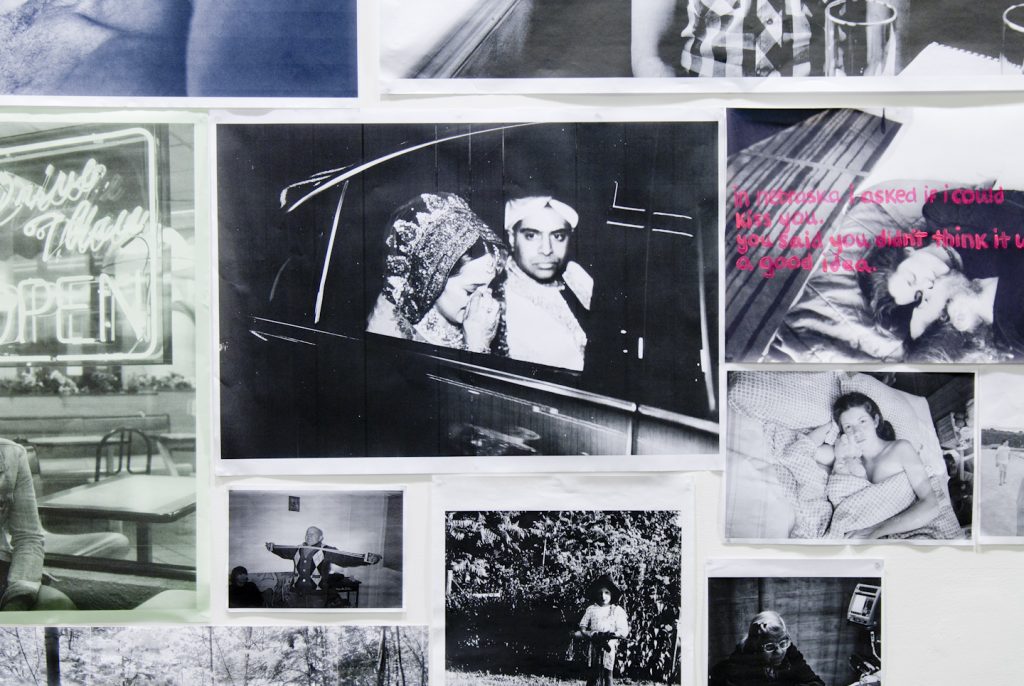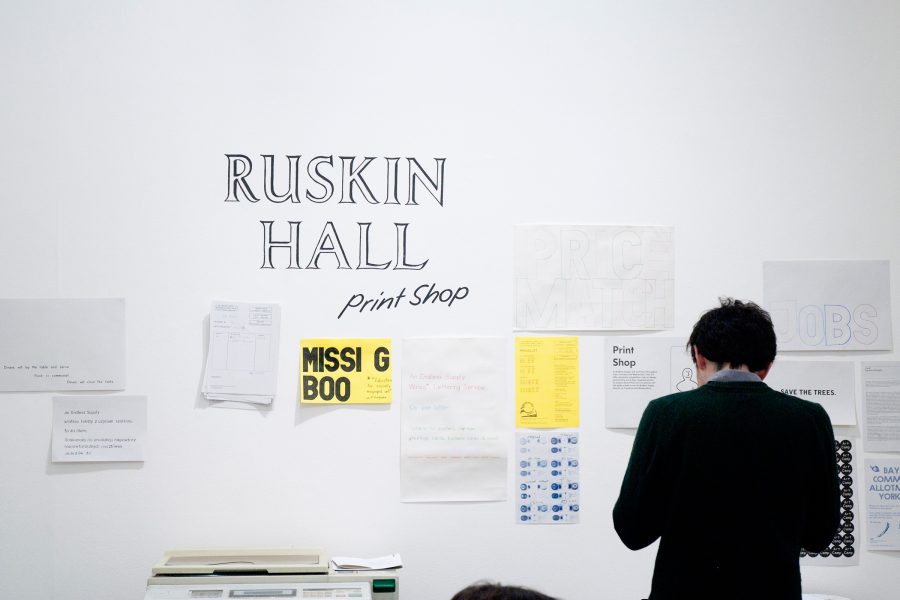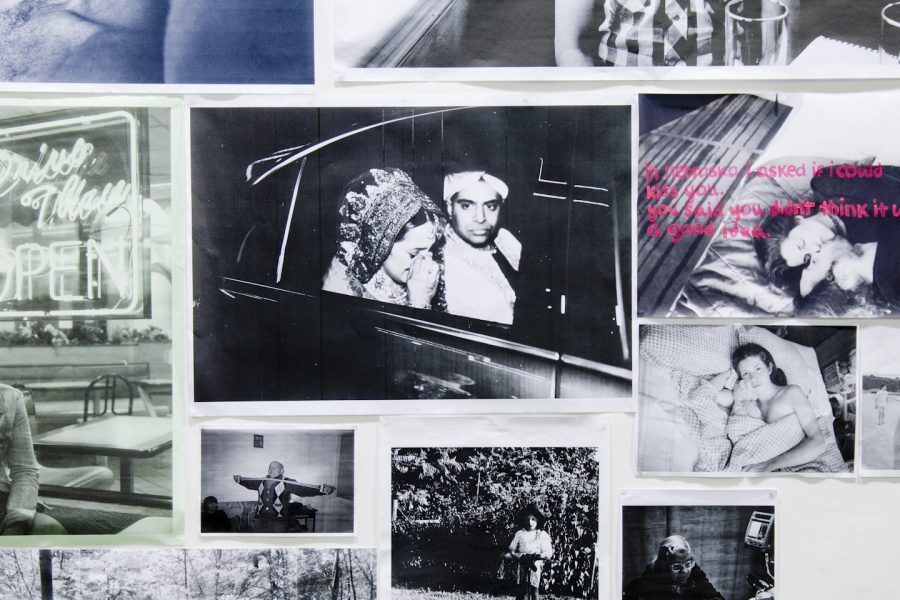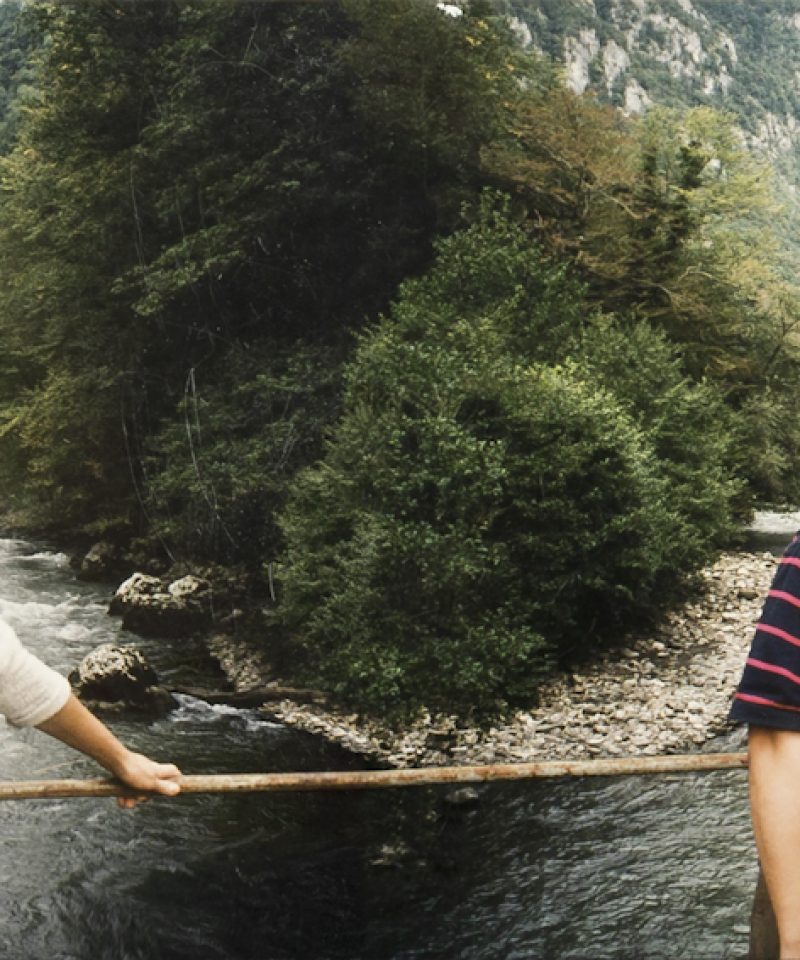I interviewed The Photocopy Club (Matt Martin) via email about his inclusion in the Jerwood Encounters: Family Politics exhibition. You can get more information about The Photocopy Club at their website here.
Hi Matt, maybe we should start with explaining what is The Photocopy Club is?
The Photocopy Club was made to make a photography exhibition that was accessible to everyone. I wanted to make a giant zine that everyone could take a page from. I had been doing pop-up style exhibitions since college and I love working with people to put together shows. I wanted to make a project that was low cost for the photographer, the curator and the collector and help to get young people into printing and buying photography. The idea of The Photocopy Club is that photographers submit their work printed using the lowest cost printing method and that is the photocopier. They then post their submission to us and we exhibit it. All the work is for sale for £5 and the money made goes towards the hires of the venues and photocopy club zines.
What do you think is the central question in your work?
I wanted to break down the walls of the art/photography world. I want to get photographers to start printing their work again. Photography on the internet plays such a huge part in world and we see so many images every day, that I wanted to try and get photographers to slow down their process and really think about the images they were showing. Printing them on a photocopier puts a new twist on the image and lets people see it in a different light – maybe something that comes across more personal to the viewer. To get photographers to exhibit on a level platform as well. To have professionals exhibit alongside up and comers was the main plan of the project. All the work is signed on the back by the photographers but no one knows who took what image until the image is payed for. That way you are taking something home because you love the image and not because of who took it.
Do you feel that the physical is a more stable archiving medium than the internet?
I have always made my own photography with the outcome being in a book format. From looking at photo albums as a child, I have always loved to hold images. I’m lucky because I am part of the on the cusp generation between film and digital. I have had an equal amount of each medium. Because we take so many images now, to store work digitally or online just makes sense. It costs less and takes up less space.
What do you think happens to the image offline that is different to an online environment?
I think in a way an image offline feels like it can live forever. The internet is not under our control but books and prints have and always will be cared for. Through books, photographers feel like once they are gone there images will keep them living on forever. I don’t think they feel the same about the images online. It’s too disposable.
The aesthetics of photocopying, for me, are synonymous with the punk and fanzine era and alternative forms of distribution. Are you evoking this in some way? Do you feel like this has now become fetishised?
I come from a DIY and Punk background. From the moment I heard the Clash at the age of 14/15 I was into punk music. I play in bands, I skateboard and I make stuff out of what I have. I used to do graffiti and because I was not the best painter I would take photos of my mates painting and then print them out on photocopies and wheat paste them around the city. Photocopies have always played a big part in my art work from when I was at college. The problem with final exhibitions is that the cost of printing and framing is too much for some people, so you have to find other means to show your work.
Zines and these other low cost printing methods are just a way to get your work out into your community. Zines have always been in some way a collectors item. Even when they were being made to tell people in the world what main news media wasn’t telling you or about what’s going on in your scene, they would only run in small editions and once it was gone it was gone. In more recent years with the zine format being taken on within the photography and art world, these small run self-publish books are definitely something that people fetish over. They are now quite far removed from the original word and DIY style of fanzine and with more care on paper, binding and distribution they are a strong format into which way an artists can showcase their work.
Did you see the recent Xerography show at Firstsite in Colchester? It’s interesting to think that historically the use of photocopying was tied to a DIY agenda, and the availability of cheap mass produced publishing. It certainly has a very different effect now – it seems to me about something far more aestheticised…
I didn’t see the exhibition. I think the fact that photocopies are looked at as a “retro” method, similar to film, tapes, VHS, and vinyl that it is now seen as more artistically pleasing. They are not perfect and they are different every time. Each print, in a way, is a one-off.
Online images – or the poor image to paraphrase Hito Steyerl – are abundant – is your work about creating an image scarcity within this context of abundance? A photocopy is situated somewhere between an artist’s edition and a freely available image found online…
I don’t think we have to look that deep into it. It’s just about getting people to exhibit their photography in print without anyone being more well off than the other. It’s about the photograph itself, not how it’s presented.
Do you see a connection to what you are doing and mail art?
At first I didn’t even think about that. But when we started getting all these amazing envelopes and notes from people the envelopes became a huge part of the exhibition. People love to see where the work has come from. It’s a huge part of the photocopy club experience.
I’m interested in the fact that you describe the installations as open zines – For me, it is very different seeing the images simultaneously all out on the wall. You have a more spatial, rather than a linear relationship then you get online. I was wondering whether you would like to talk about this?
When I’m curating the wall I always think about the shape and the flow of the whole exhibition. I like the viewer to be moved throughout the space. The shape and the images need to play off each other to help the viewer move from one piece to the next. It’s also made in a way that you can keep coming back and see new things. You can also step away from the wall and see the whole shape and layout as one big piece of work. I’m very interested in the way we walk around galleries. Some people follow a strict line and others just go to what catches their eye. I want to make an exhibition that works in both aspects, in which you’re not stuck to one route but you can come in at what ever point and be inspired.
The American theorist Laurent Berlant talks very well about the role that intimacy plays within public life. This is what creates a social sphere, a space where we connect and share our intimacies and personal stories to create an ‘empathetic public’. This seems very pertinent to the iconography of the family – and in relation to your work, what are your thoughts on this?
As a photographer I shoot my everyday life. My friends, relationships, family, everyday situations and then put them online for everyone to see or in a zine for people to buy. Why are people interested in other peoples lives? We say that we are documenting our path through life for future generations, but will these images be as sort after in the future as the images of the past are to us.Photography is all about telling a story. It’s about freezing time and letting the mind figure out what’s going on. We are so used to sharing our most personal details online these days for all to see. We feel that by showing this we can gain a reaction from our peers. But will those memories last in the photographic form? In 30 years time will people be finding old hard drives in charity shops and making books about times gone by.





